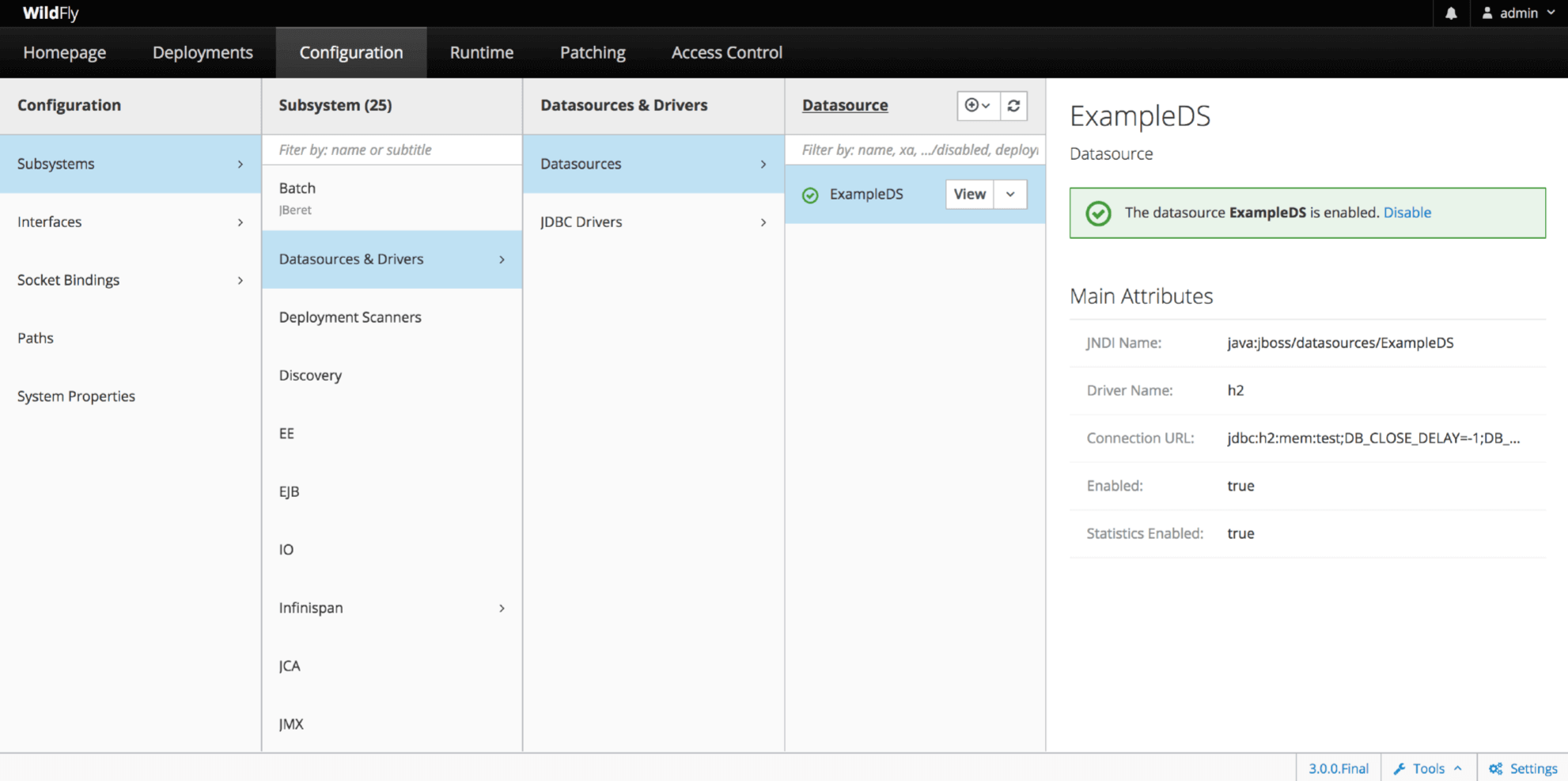WildFly
A powerful, modular, & lightweight application server that helps you build amazing applications.
Now available: WildFly 39 Beta1
Watch again and give feedback!
We've hosted our last conference on
Tuesday, March 25
WildFly Mini Conference

Powerful
Configuration in WildFly is centralized, simple, and user-focused. The configuration file is organized by subsystems that you can easily comprehend and no internal server wiring is exposed. All management capabilities are exposed in a unified manner across many forms of access. These include a CLI, a web based administration console, a native Java API, an HTTP/JSON based REST API, and a JMX gateway. These options allow for custom automation using the tools and languages that best fit your needs.
Modular
WildFly does classloading right. It uses JBoss Modules to provide true application isolation, hiding server implementation classes from the application and only linking with JARs your application needs. Visibility rules have sensible defaults, yet can be customized. The dependency resolution algorithm means that classloading performance is not affected by the number of versions of libraries you have installed.
Lightweight
WildFly takes an aggressive approach to memory management. The base runtime services were developed to minimize heap allocation by using common cached indexed metadata over duplicate full parses, which reduces heap and object churn. The administration console is 100% stateless and purely client driven. It starts instantly and requires zero memory on the server. These optimizations combined enable WildFly to run with stock JVM settings and also on small devices while leaving more headroom for application data and supports higher scalability.
Standards Based
WildFly implements the latest in enterprise Java standards from Jakarta EE and Eclipse MicroProfile. These improve developer productivity by providing rich enterprise capabilities in easy to consume frameworks that eliminate boilerplate and reduce technical burden. This allows your team to focus on the core business needs of your application. By building your application on standards you retain the flexibility to migrate between various vendor solutions.
Latest News
We’re pleased to announce the release of WildFly 39 Beta 1. This version contains updates, new features, and bug fixes, paving the way for the planned January final release. This beta version is a crucial step in our development cycle, allowing the community to test and provide feedback on the latest changes. What’s New and Noteworthy? Here’s a quick rundown of the highlights: Clustering: We’ve added a couple new things in the clustering/high-availability area:...
Read More >I am pleased to announce the 0.3.0.Final release of the A2A Java SDK for Jakarta. You can find the release here, and it supports version 0.3.0 of the A2A Protocol Specification. Since the 0.3.0.Beta1 release, there haven’t been big changes on our side, but we are now aligned with version 0.3.2.Final of the A2A Java SDK. A lot of work has taken place there since the previous version of the A2A Java SDK we...
Read More >I’m pleased to announce that the new WildFly and WildFly Preview 38.0.0.Final releases are available for download at https://wildfly.org/downloads, The Galleon feature packs for WildFly 38 are available in the JBoss Maven repository. Note We’ve encountered problems syncing the WildFly 38 artifacts and other Maven content from the JBoss Maven repository to Maven Central. This problem is currently under investigation. We recommend Maven users include https://repository.jboss.org/nexus/content/groups/public-jboss/ in their Maven repositories configuration. This is a...
Read More >This blog discusses resteasy-grpc release 1.0.0.Beta1.
Read More >We’re excited to announce the release of WildFly 38 Beta 1! This version contains updates, new features, and bug fixes, paving the way for the upcoming final release. This beta version is a crucial step in our development cycle, allowing the community to test and provide feedback on the latest changes. What’s New and Noteworthy? This release focuses heavily on component upgrades, MicroProfile 7.1 support, and enhancements to the WildFly Preview distribution. Here’s a...
Read More >It’s that time of year again! Hacktoberfest is back, calling on developers, contributors, and open-source enthusiasts from around the globe to come together for a month-long celebration of collaboration. Whether you’re a seasoned coder or just starting your journey, Hacktoberfest is the perfect opportunity to give back to the community, learn new skills, and make a real impact, one pull request at a time. What is Hacktoberfest? Hacktoberfest is a month-long event in October...
Read More >Following the release of version 0.3.0.Beta1 of the A2A Java SDK, I am excited to announce the release of the corresponding 0.3.0.Beta1 release of the A2A Java SDK for Jakarta. A2A stands for Agent2Agent Protocol, which is a protocol hosted under the Linux Foundation to enable seamless communication and collaboration between AI Agents implemented using any language/technology stack. The A2A Java SDK for Jakarta consumes the A2A Java SDK. The reason for the split...
Read More >